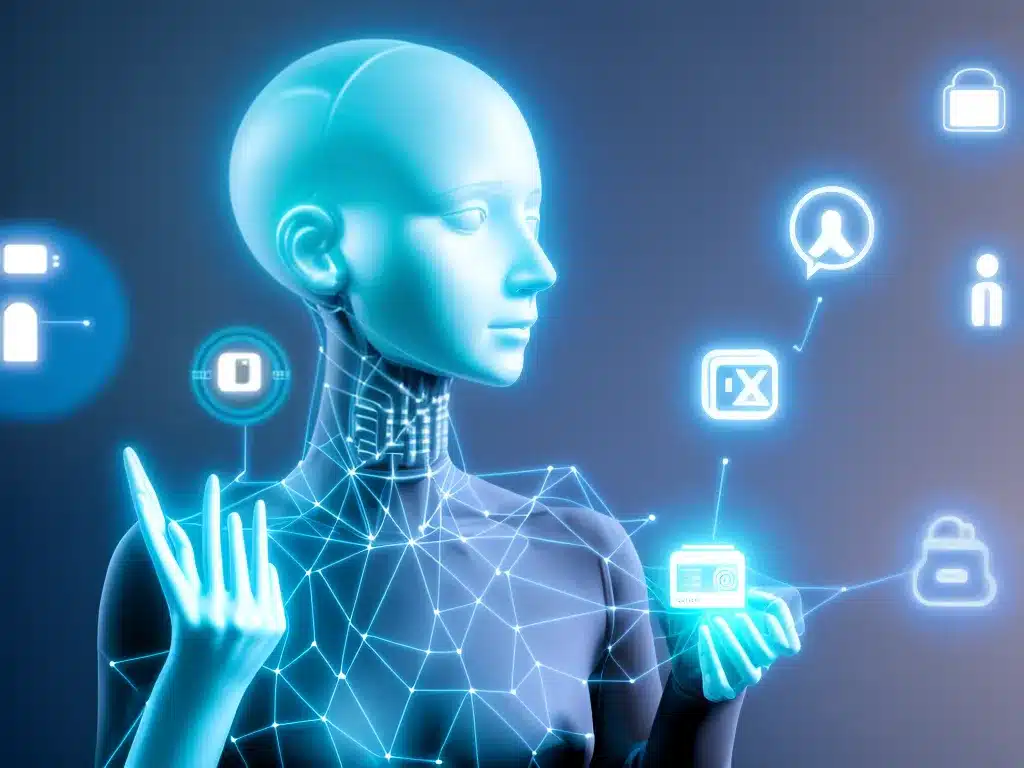
Introduction
Artificial intelligence (AI) assistants and context-aware interfaces are becoming increasingly prevalent in our daily lives. As AI and machine learning continue to advance, these technologies are able to understand and respond to users and environments in more intuitive and personalized ways. In this article, I will provide an in-depth look at AI assistants and context-aware interfaces, how they work, current applications, and future directions for these rapidly evolving technologies.
What are AI Assistants?
AI assistants, also known as virtual assistants or intelligent agents, are software programs that can understand natural language requests and complete tasks for users. The most well-known examples are virtual assistants like Apple’s Siri, Amazon’s Alexa, Microsoft’s Cortana, and Google Assistant.
AI assistants utilize natural language processing (NLP) to understand spoken or typed requests. They can interpret more complex requests beyond simple commands. The assistant then determines the appropriate action to take and responds in natural language. AI assistants may connect with other services and platforms to fulfill user requests.
Over time, assistants can continue learning about a user’s preferences to deliver more personalized responses and recommendations. Many assistants can also engage in conversational exchanges by understanding context and responding appropriately.
Capabilities of AI Assistants
Some key capabilities of today’s AI assistants include:
-
Natural language processing – Understanding natural language and extracting meaning from spoken or typed requests.
-
Voice recognition – Identifying and interpreting the user’s voice patterns.
-
Conversational intelligence – Maintaining context in conversations and providing relevant responses.
-
Connecting services – Integrating with other platforms and services to fulfill requests.
-
Personalization – Learning about individual users to deliver customized results.
-
Task completion – Taking action to complete basic tasks like setting alarms, controlling smart home devices, making payments, etc.
Current Uses of AI Assistants
AI assistants are being utilized in a variety of products and services today:
- Smart speakers – Alexa, Google Home, Siri enable voice control of music, information, and smart devices.
- Smartphones – Siri, Google Assistant field queries, place calls and texts hands-free.
- Wearables – Assistants in smartwatches and fitness trackers provide alerts and track metrics.
- Smart displays – Screens add visual responses to voice-based assistants.
- Smart home devices – Assistants can control lights, appliances, temperature, security systems.
- Vehicles – In-vehicle assistants provide navigation, entertainment, and car controls.
- Enterprise solutions – AI assistants handle customer service queries or provide employee information.
The capabilities of assistants are expanding rapidly to enable more seamless voice-based interactions between humans and technology.
Context-Aware Interfaces
Context-aware interfaces refer to human-computer interfaces that can adapt and respond based on contextual information. This may include the user’s location, time of day, activity, preferences and usage patterns. The system draws from these contextual clues to change its functionality and presentation.
For example, a context-aware smartphone may:
- Silence notifications when a user is sleeping based on time and location.
- Suggest frequently visited locations in maps based on past habits.
- Adjust music recommendations based on listening history and liked songs.
By being aware of situational context, interfaces can feel more intuitive, smart and personalized. Users do not have to manually provide the context each time.
Implementing Context-Awareness
Some ways context-aware capabilities are implemented include:
- Sensors – GPS, cameras, microphones, etc. detect environmental signals.
- Machine learning – Discovers usage patterns as input data to algorithms.
- Preference settings – Users provide personalized settings and priorities.
- External data sources – Weather, traffic, schedules, etc. provide additional context.
The data is analyzed with heuristics and algorithms to determine the context and adapt the interface and experience accordingly.
Context-awareness relies heavily on AI and machine learning techniques. The system gets better at inferring context as it collects more behavioral data over time.
Current Uses of Context-Aware Interfaces
We encounter context-aware interfaces in many everyday situations:
- Mobile apps – Location-based notifications, predictive typing, activity tracking.
- Media services – Personalized recommendations for music, movies, news, etc.
- Smart home devices – Adjust home temperature, lighting, appliance usage based on habits.
- Navigation – Traffic avoidance, arrival time estimates, location-relevant alerts.
- Gaming – Difficulty adjustment, controls calibration, personalized avatars.
- Shopping – Recommendations based on past purchases and browser history.
Context-awareness leads to more frictionless, useful interactions between humans and machines. The technology stands to become even more prevalent moving forward.
The Future of AI Assistants and Context-Aware Interfaces
AI assistants and context-aware interfaces still have much emerging potential as the underlying technologies continue to evolve. Some key directions include:
- Deeper personalization – More advanced learning of individual preferences and habits.
- Expanded capabilities – Handling more complex requests and workflows.
- Multimodal interaction – Support for multiple input and output modes beyond voice.
- Anticipatory interfaces – Acting proactively based on prediction of user needs and goals.
- Ambient intelligence – Seamless integration into environment and daily activities.
- Privacy considerations – Improving transparency and user control over data.
As AI maturity increases, assistants and context-aware interfaces will become smarter and more ubiquitous. However, privacy risks need to be thoughtfully addressed. Overall, these technologies aim to enhance human abilities and experiences through more naturalistic and contextual interactions.
Conclusion
AI assistants and context-aware interfaces are increasingly shaping our interactions with technology. Key enablers like natural language processing, machine learning, and predictive algorithms allow these interfaces to understand conversational context, user behaviors and situational signals. This leads to more personalized, proactive and frictionless experiences. As these AI capabilities continue to develop, assistants and context-aware interfaces will provide greater utility and become more seamlessly integrated into our daily lives. However, user privacy will be an ongoing consideration. The future points toward more omnipresent, ambient intelligence that understands users and surroundings to a deep degree.












